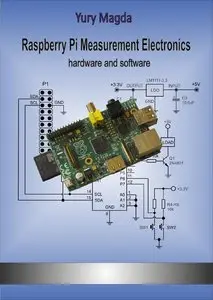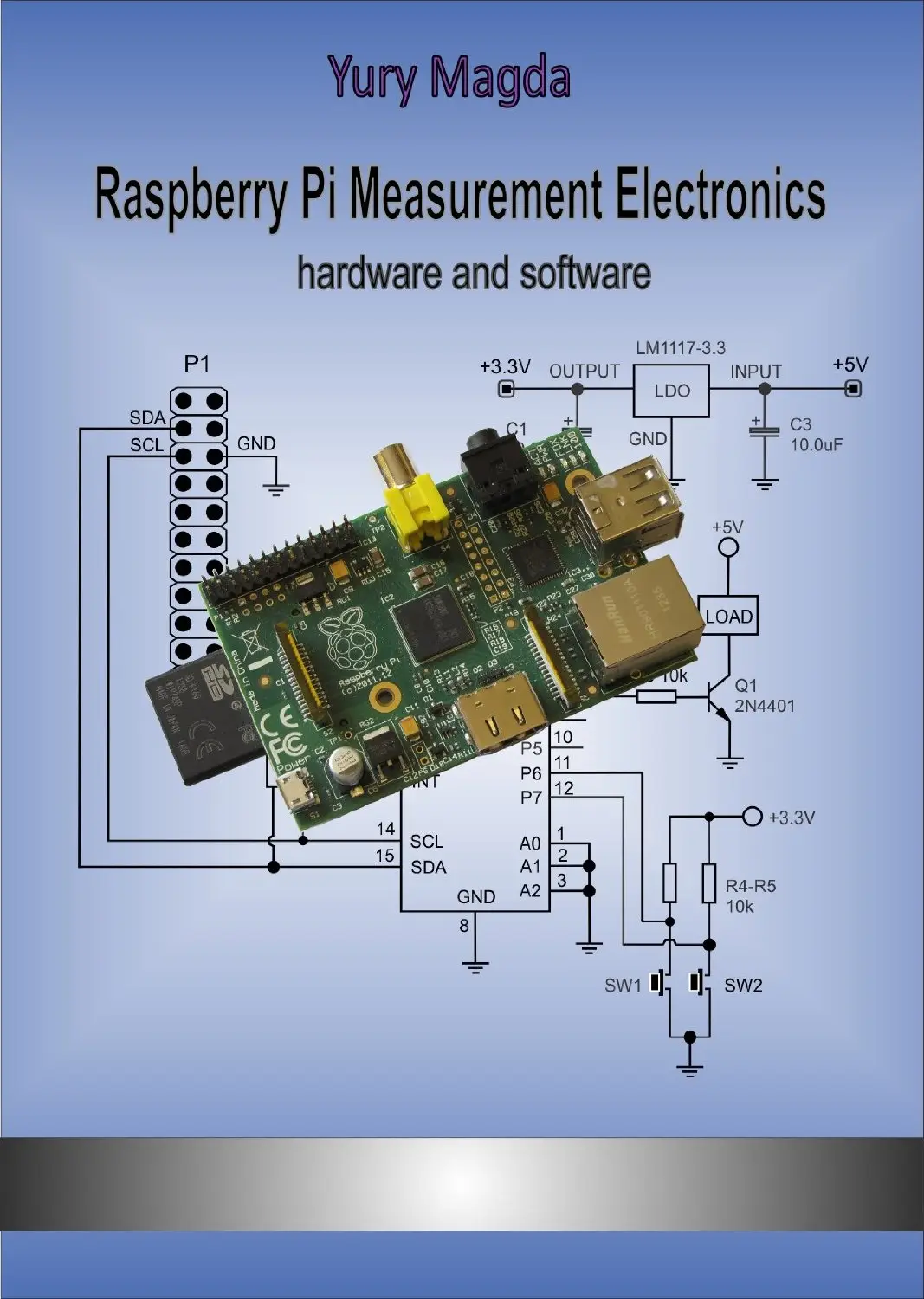Raspberry Pi Measurement Electronics: hardware and software by Yury Magda
English | 7 Apr 2014 | ASIN: B00BHZD48W | 183 Pages | EPUB/AZW3/PDF (conv) | 6.77 MB
English | 7 Apr 2014 | ASIN: B00BHZD48W | 183 Pages | EPUB/AZW3/PDF (conv) | 6.77 MB
Raspberry Pi being a miniature general-purpose desktop computer can also form a basis for building numerous measurement and control systems by both professionals and hobbyists. This is due to the general purpose input/output port (GPIO) available on the Raspberry Pi board.
This book is thought as a highly practical guide which can help the readers to design measurement and control systems based upon Raspberry Pi. These systems can comprise external electronic circuits controlled by programs written in Python. Projects described in the book illustrate processing digital and analog signals and using I/O expanders. Since many measurement systems process analog signals, the guide contains a brief theory and practical applications dedicated to use of popular high-resolution Analog-To-Digital converters. The guide contains projects which illustrate processing small signals with instrumentation amplifiers and measuring frequencies of digital and analog signals using high-precision Frequency-To-Voltage converters.
The material of the book also covers digital signal synthesis with digital potentiometers and Digital-To-Analog converters. The readers will find practical designs of digitally programmable wide-band oscillators, signal amplifiers and PWM circuits. The guide describes practical aspects of interfacing and programming high-precision wide-band sinusoidal, triangular and rectangular waveform generators using popular high-resolution Direct Digital Synthesizer (DDS) chips. Each project is accompanied by a brief description which helps to make things clear. Most projects described in the book can be improved or modified if necessary. Each project includes a schematic circuit accompanied by a Python source code with the detail explanation. All projects were designed using Raspberry Pi Model B Rev.2 board running Raspbian OS.



